Poly(L-lysine hydrobromide)
Synonym(s):PDL HBr;PLL HBr
- CAS NO.:25988-63-0
- Empirical Formula: C6H14N2O2
- Molecular Weight: 146.19
- MDL number: MFCD00165424
- EINECS: 246-168-0
- SAFETY DATA SHEET (SDS)
- Update Date: 2025-07-04 15:33:18
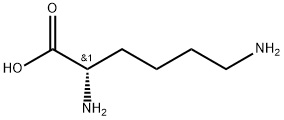
What is Poly(L-lysine hydrobromide)?
Chemical properties
white powder
The Uses of Poly(L-lysine hydrobromide)
Poly-L-lysine polymers can be used in promoting cell adhesion to solid substrates, conjugation to methotrexate for increased drug transport, microencapsulation of islets, cell microencapsulation technology, microarray glass slide coating, and chromosomal preparations. It has also been used as a transfection agent for efficient labeling and to facilitate endocytosis. Lower molecular weight poly-L-lysine (30,000-70,000) is less viscuous in solution, but higher molecular weight versions provide more attachment sites per molecule.
The Uses of Poly(L-lysine hydrobromide)
- Poly-L-lysine coated glass coverslips have been used for mounting samples for scanning electron microscopy.
- Poly-L-lysine coated wells were used for trapping of PC-12 cells on electrodes.
- Poly-L-lysine-coated borosilicate glass slides were used for the seeding of viral vector-transduced cells.
The Uses of Poly(L-lysine hydrobromide)
Recommended as a cell culture substratum when using 0.5 ml of a 0.1 mg/ml solution to coat 25 cm2. Optimal conditions for attachment must be determined for each cell line and application.
What are the applications of Application
Poly-L-Lysine Solution is an adhesive subbing solution for immunoperoxidase and routine histologic staining preparations
Definition
ChEBI: The hydrobromide salt of poly(L-lysine).
General Description
Poly-L-lysine hydrobromide is a nonspecific attachment factor in promoting cell adhesion to the substratum.
Biochem/physiol Actions
Poly-L-lysine is a nonspecific attachment factor for cells useful in promoting cell adhesion to solid substrates by enhancing electrostatic interaction between negatively charged ions of the cell membrane and the culture surface. When it is absorbed to the cell culture surface, poly-L-lysine functions to increase the number of positively charged sites available for cell binding. With cells that can digest poly-L-lysine, poly-D-lysine should be used as the attachment factor.
Properties of Poly(L-lysine hydrobromide)
| storage temp. | 2-8°C |
| form | lyophilized powder |
| color | White to off-white |
| Stability: | Stable. Incompatible with strong acids, strong bases. |
Safety information for Poly(L-lysine hydrobromide)
| Signal word | Warning |
| Pictogram(s) |
 Exclamation Mark Irritant GHS07  Environment GHS09 |
| GHS Hazard Statements |
H315:Skin corrosion/irritation H317:Sensitisation, Skin H319:Serious eye damage/eye irritation H411:Hazardous to the aquatic environment, long-term hazard |
| Precautionary Statement Codes |
P261:Avoid breathing dust/fume/gas/mist/vapours/spray. P264:Wash hands thoroughly after handling. P264:Wash skin thouroughly after handling. P273:Avoid release to the environment. P280:Wear protective gloves/protective clothing/eye protection/face protection. P302+P352:IF ON SKIN: wash with plenty of soap and water. P305+P351+P338:IF IN EYES: Rinse cautiously with water for several minutes. Remove contact lenses, if present and easy to do. Continuerinsing. |
Computed Descriptors for Poly(L-lysine hydrobromide)
New Products
Boc-N-Me-Val-OH tert-butyl 9-methoxy-3-azaspiro[5.5]undecane-3-carboxylate Indole Methyl Resin Gabapentin EP Impurity B Ethyl N-(2- cyanoacetyl)carbamate Magnessium Ascorbate 1-Chloro-4-Methyl-2-Nitrobenzene 1,3-Diethyl-1,3-Diphenylurea 3-(4-morpholinophenylamino)-5-amino-1H-pyrazole-4-carbonitrile Methyl 2-methylquinoline-6-carboxylate 2,4-dihydroxybenzaldehyde 2-((4-morpholinophenylamino) (methylthio) methylene) malononitrile Benzethonium Chloride Trenbolone Enanthate Prednisolone acetate Cisplatin Chlorodehydromethyl testosterone Ketoconazole 1,3-Di Iodo Benzene Methyl 2-oxo-2,3-dihydrobenzo[d]oxazole-7-carboxylate 3-Hydroxy-4-nitrobromobenzene 4-(2-Aminoethyl)-7-hydroxy-2H-chromoen-2-one 2-Ethyl-1,4-diaminobenzene 2-Ethylhexyl 4-aminobenzoateRelated products of tetrahydrofuran


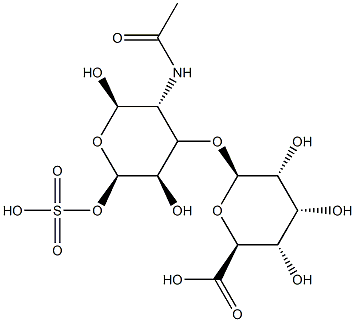


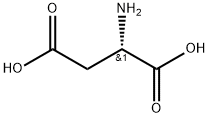
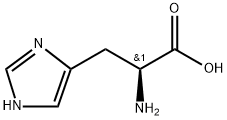
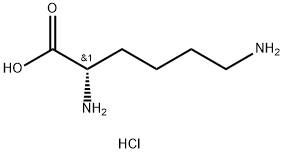
You may like
-
 Poly-L-lysine hydrobromide CAS 25988-63-0View Details
Poly-L-lysine hydrobromide CAS 25988-63-0View Details
25988-63-0 -
 Poly-L-lysine hydrobromide CAS 25988-63-0View Details
Poly-L-lysine hydrobromide CAS 25988-63-0View Details
25988-63-0 -
 Poly-L-lysine hydrobromide CAS 25988-63-0View Details
Poly-L-lysine hydrobromide CAS 25988-63-0View Details
25988-63-0 -
 Poly-L-lysine hydrobromide CAS 25988-63-0View Details
Poly-L-lysine hydrobromide CAS 25988-63-0View Details
25988-63-0 -
 Poly-L-lysine solution CAS 25988-63-0View Details
Poly-L-lysine solution CAS 25988-63-0View Details
25988-63-0 -
 Poly-L-lysine solution CAS 25988-63-0View Details
Poly-L-lysine solution CAS 25988-63-0View Details
25988-63-0 -
 Poly-L-lysine hydrobromide CAS 25988-63-0View Details
Poly-L-lysine hydrobromide CAS 25988-63-0View Details
25988-63-0 -
 Poly-L-lysine hydrobromide CAS 25988-63-0View Details
Poly-L-lysine hydrobromide CAS 25988-63-0View Details
25988-63-0
